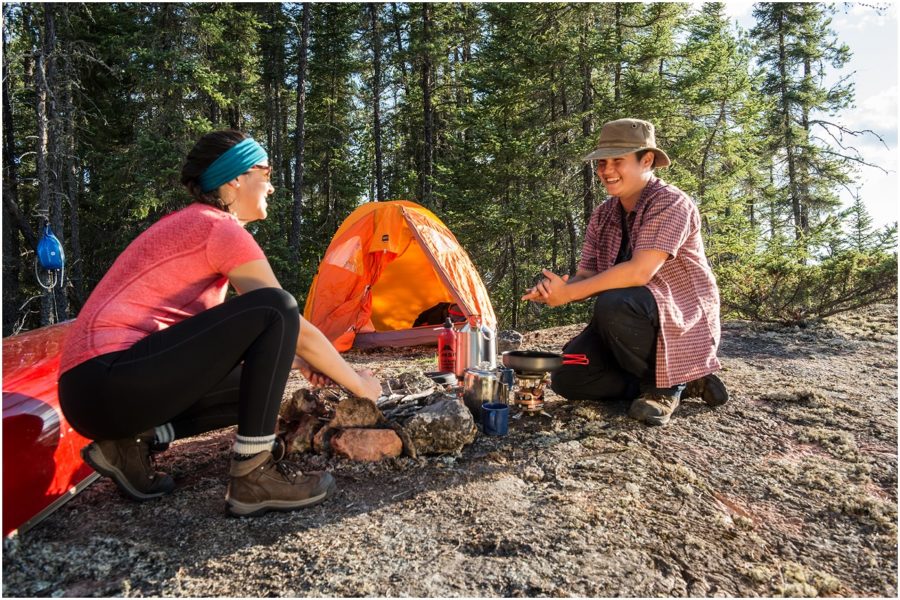How to Use Bear Spray

(Photo: Parks Canada)
Most bear attacks occur when they’re surprised at close range. If you’re out in the backcountry, you can let a bear know you’re in the area by letting out loud noises every often. Bear bells don’t usually work that well, so the best way to avoid a surprised bear encounter is the human voice. Tactics such as talking with your companions or even playing music through a portable speaker can be casual ways to avoid surprising bears.
But even if you’ve taken all of these precautions, if you’re in a situation where a bear is approaching or charging at you, you’re going to need to learn how to use bear spray. Bear spray is the most effective way of deterring an approaching grizzly or black bear at close range. It’s used many times to prevent bear attacks and studies have shown that bear spray is more effective than using a gun. The spray consists of an aerosol extract of hot peppers designed to cause an immediate burning sensation to the bear when they are in contact with the spray. The chemical will cause the bear to have temporary loss of sight and trouble breathing if it is breathed in. Although the effects of the spray may sound harsh, bear spray is not lethal, and the discomfort will wear off with time.
It’s important to always check online or call the ranger station if bear spray is permitted.
Tip: Check the expiration date of your spray. Most sprays will have a shelf-life of 2-3 years. The older a spray is, the less propellent it will be.
How to use bear spray
- Keep it accessible around your hip – You want to have the spray ready to take out in case you encounter a bear. It’s best to keep it attached to your belt, chest harness, or external pocket that is readily accessible. Do not pack your bear spray in your backpack or bike because those items may be separated from you. Have it with you at all times in the case of surprise encounters.
- Remove the safety clip – Bear spray will include a safety clip to prevent accidental firing. In the rare event that you encounter a bear that is approaching or charging at you, grab the bear spray and remove the safety clip by pulling the top clip back with your thumb.
- Aim downward and adjust with wind – Back away slowly and avoid eye contact with the bear. You’ll want to make sure to aim at the animal’s head and not above it. Most sprays will have enough burst strength to fight against wind, but if there are strong wind gust, you may want to adjust the spray with the direction of the wind.
- Begin spraying – Most bear sprays will have a reach of up to 4 meters, similar to a car length. If you spray too far, it may have no effect on the bear, and you could waste your spray. Always check the distance of your spray to be aware of its capabilities. Keep two hands on the bear spray, one on the trigger and the other holding the canister. Press down on the trigger with your thumb and deploy with 2 second bursts. Most regular sized bear sprays come with up to 6-8 sprays, so it’s best to conserve your bear spray in case you need to use it again. Spray downwards in a side-to-side motion to create a cloud in front of the approaching bear.
- Spray until the bear changes direction - Most of the time, the first blast is enough to deter the bear, but you may need to spray more than once.
- Leave the area - After the bear is stopped or turned away, this is your chance to head back to the direction you came from but keep your bear spray ready in case you need it again.
Using bear spray is usually your last line of defense when encountering a bear. Understanding and practicing safe travel when you’re in bear country is the best way to avoid a surprise encounter with a bear. Ultimately most bears don’t want to have a run-in with you as much as you are with them. Be mindful that this is their home and we’re just visitors.




Leave a comment
All comments are moderated before being published.